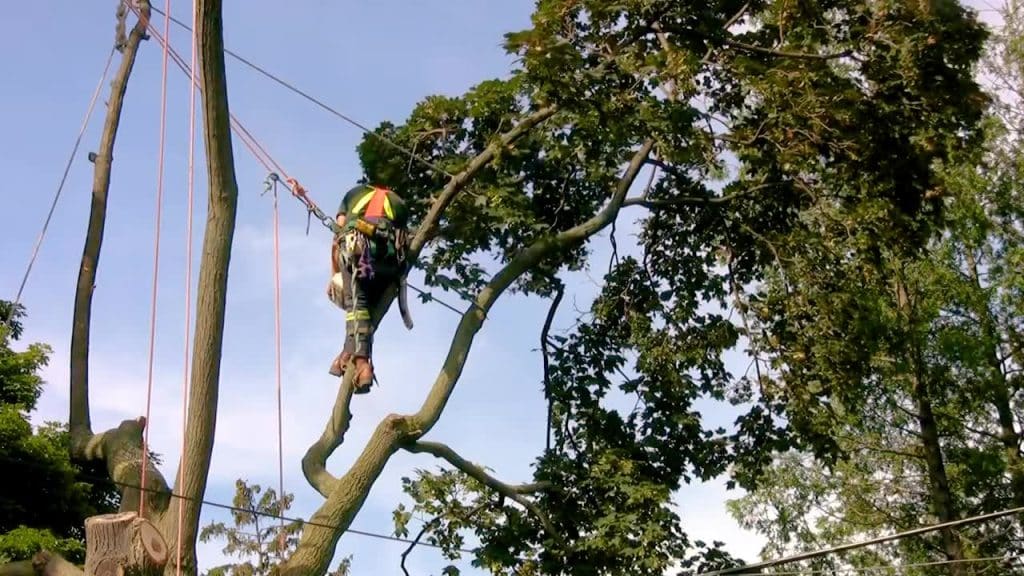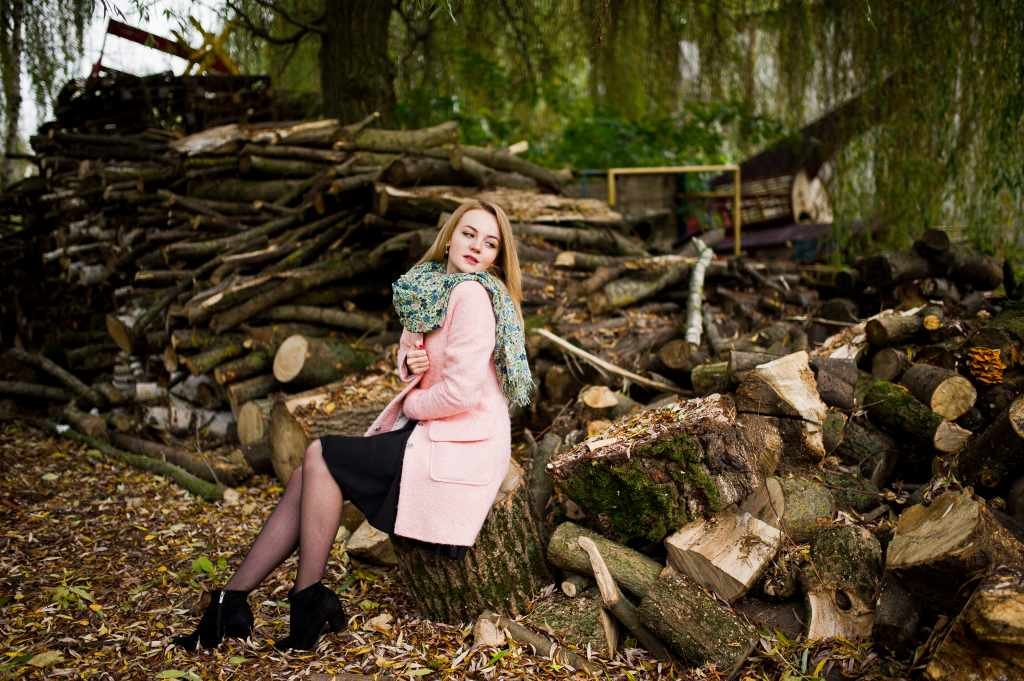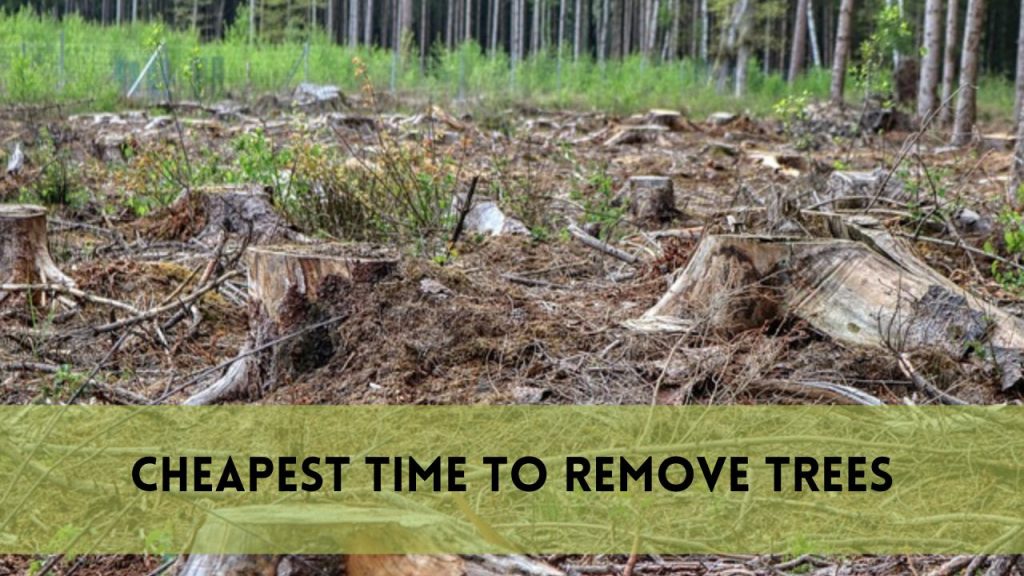Bee colonies, primarily honeybee colonies, construct buildings called beehives on trees to serve as their homes. These colonies are usually found dangling from branches or snuggled within tree hollows. Beehives on trees are where bees dwell, raise their young, and store their honey and pollen.
A beehive is normally formed of combs composed of beeswax, where the bees organize their brood cells (where young bees develop) and store their food supplies. Bees are highly organized creatures, and the hive serves as their central hub for survival and reproduction.
However, in order to ensure the safety of both people and bees, experts may need to carefully remove a beehive if it poses a threat to humans due to its location.
Steps to Remove Beehives From Tree
1.Identification:
The first symptom of a beehive in a tree is an increase in the number of bees flying about it. Keep an eye out for buzzing sounds and the number of bees near the tree.
Look for visual indicators such as bees entering and exiting a certain location on the tree. Bees can be seen transporting pollen or nectar into the hive.
Some beehives on trees can be seen as colonies of bees hanging from branches or within tree hollows. They might vary in size and appearance.
2. Assessing beehives safely
Safely gaining access to a beehive:
Keep a Safe Distance:
If you suspect that a beehive is in a tree on your property, keep a safe distance. Do not approach the hive too closely, since this may induce defensive behavior from the bees.
Wear Protective gear.
If you need to access the hive for removal or inspection, you must wear protective clothes, such as a bee suit, gloves, and a veil. This gear will help you avoid bee stings.
If you are unsure how to deal with a beehive or if anyone in your household is allergic to bee stings, it is better to engage a professional bee removal service. They have the skills and tools to manage the problem safely.
Gather the necessary equipment:
- Protective Gear: Wear a bee suit, gloves, and a veil to shield yourself from bee stings.
- Bee Smoker: A bee smoker helps calm the bees by interfering with their communication.
- Ladder: Depending on the hive’s height, you may need a sturdy ladder.
- Containers: Prepare containers with lids to safely relocate the hive.
- Bee Brush: This can be used to gently remove beehives from tree.
3. Select the appropriate timing:
The timing of beehive removal is essential. Spring and fall are often the ideal seasons because bee populations tend to be lower, and bees are less busy during cooler temperatures.
4. Prepare the area:
Before approaching the hive, make sure the space around the tree is clear of impediments. This contributes to the creation of a safe working environment.
Keep bystanders, especially children and dogs, at a safe distance to avoid any potential accidents.
5. Approach the Hive:
Approach the hive gently and deliberately. Sudden movements or loud noises agitate bees.
Use the bee smoker by softly puffing cool smoke at the hive’s entrance. Smoke suppresses the bees’ alarm pheromones, calming them down. Continue to utilize the smoker throughout the removal process.
6. Seal the tree base:
Cover the tree’s base with a plastic sheet or tarp to prevent bees from returning to the hive’s location after it has been removed. This prevents any remaining bees from reoccupying the location.
7. Remove the Hive:
Gently cut or pry the hive off of the tree. Use a hive tool, knife, or specialist beekeeping knife made for this purpose. Be exceedingly cautious during this phase to avoid destroying the comb or hurting the bees. Slow, deliberate motions are required.
As you remove the hive, place it in the prepared container. To keep bees from fleeing, make sure the container has a tight-fitting lid.
8. Relocate the Hive:
Choose a suitable place away from your property for transferring the hive. This should be a well-ventilated space that gives bees access to food sources.
Allow the bees to acclimate to their new environment by gently releasing them into their new place.
9. Clear the area:
After the hive has been removed, thoroughly clean the area around the tree. Remove any hive fragments or honey to avoid attracting pests or other bee colonies.
10. Monitor for stragglers:
Some bees may stay in the area after removal. Use the bee brush to gently entice them to leave. It is critical to be patient and compassionate during this procedure.
11. Dispose of waste material:
Dispose of any waste materials, such as combs or debris, in a responsible manner. Beeswax can be kept for a variety of purposes, including producing candles and balms.
Seal any openings in the tree after removal to prevent other swarms from occupying the same area in the future.
12. Seek professional help
If the hive is very large, in an awkward location, or you are concerned about the removal process, it is best to hire a professional bee removal service. They have the knowledge and specific tools to handle complex circumstances safely.
13. Educate yourself
Take advantage of this opportunity to learn about bee behavior, ecology, and conservation. Understanding the importance of bees in pollination and ecosystem health can lead to a greater appreciation for these critical insects.
Removing Beehives Naturally
Essential Oils Bee-Repellent Spray
This spray provides total pest control for all types of bothersome insects, including wasps and bees. It will keep bees away from any location that you spray it on without harming them.
Fill a spray bottle with eucalyptus essential oil and cedarwood essential oil to make a natural pesticide. Additionally, you can use the combination to rid your home of bees by spraying it inside closets or around windows and doors.
Take care not to spray this combination on food or in your eyes. You should also avoid putting raw essential oils on your skin. A natural bee repellant spray can also be prepared with peppermint essential oil.
Combine 2-3 tablespoons of liquid soap with water in a spray bottle, then add a few drops of peppermint oil. Because the combination is soapy, you can spray it on almost any household item. Use additional soap for outdoor use so that it stays in place in the rain. As the water evaporates, the peppermint aroma lingers as a natural bee repellant. This solution can also be sprayed on plants.
Using cinnamon
Removing beehives with cinnamon is a non-toxic and natural way to discourage bees from breeding in specified regions. While cinnamon’s strong odor may work as a bee repellent, it’s important to remember that this strategy is not suited for eliminating established colonies but can be helpful as a preventive step. Here’s how you use cinnamon to keep bees at bay:
Determine where bees may be constructing hives or where you want to prevent them from settling. Sprinkle ground cinnamon liberally in these areas, paying special attention to potential entry sites or areas where bees congregate.
Cinnamon’s efficiency deteriorates with time as a result of weather conditions. Reapply cinnamon as necessary, particularly after rainy or windy days.
Check the treated areas on a regular basis to see if the bees have been repelled. If bees continue to attempt to nest, consider taking additional precautions or hiring professional bee removal services.
The Importance of Remove Beehives from Tree
Beehives on trees can be dangerous to people, especially if someone nearby is allergic to bee stings. Bees may perceive human activities near the hive as a threat, resulting in protective behavior and stings. Removing the hive minimizes the likelihood of accidental stings and accompanying health issues. Beehives in trees can potentially cause damage to property.
The weight of a large hive may cause branches to break or impair the tree’s structure, perhaps resulting in risks such as falling limbs. Furthermore, bees may form hives in or near structures, increasing the danger of harm to homes or other structures.When threatened or overloaded, bee colonies can become more defensive and aggressive.
Removing hives from trees can help prevent swarming, which occurs when a colony splits and part of it relocates. Swarms can be disturbing and dangerous, especially in residential settings. Bees looking for food may cause a nuisance near outdoor dining areas, swimming pools, or playgrounds. Removing colonies in such areas can improve the quality of life for residents.
FAQs
Are all bees dangerous?
No, not all bees are hazardous. Honeybees, for example, are normally calm unless provoked. It is critical to identify the bee species before taking action.
Can I remove beehives from tree without a smoker?
While a bee smoker is strongly advised for safe removal, it is feasible to remove a beehive without one. However, this can be more difficult and may raise the danger of bee aggression.
What if I am allergic to bee stings?
If you or someone in your household is allergic to bee stings, it is strongly recommended that you employ a professional bee removal service to safeguard your safety.
When is the optimum time to remove a hive from a tree?
Spring or fall is usually the optimum period because bee populations are lower and bees are less busy in cooler weather.
How can I prevent further beehives in my trees?
Inspect your property for hive activity on a regular basis, block any potential access points into your home, and consider planting bee-friendly flowers away from high-traffic areas.
CONCLUSION
Remove beehives from tree takes both care and knowledge. Using a bee smoker to calm the bees throughout the removal process can make it safer for both you and the bees. By following the step-by-step approach and seeking professional assistance if necessary, you can assure a humane and responsible removal while protecting the crucial role bees play in our ecology.




